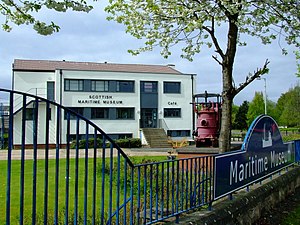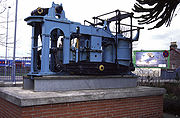 The Linthouse building | |
 | |
| Established | 1991 |
|---|---|
| Location | The Linthouse, Harbour Road, Irvine, Ayrshire KA12 8BT Scotland |
| Coordinates | 55°36′34″N4°40′37″W / 55.60953°N 4.67684°W |
 The Dumbarton building | |
 | |
| Established | 1983 |
| Location | Denny Ship Model Experiment Tank, Castle Street, Dumbarton, Dunbartonshire G82 1QS Scotland |
| Coordinates | 55°56′36″N4°33′47″W / 55.94342°N 4.56312°W |
| Type | Maritime museum |
| Collection size | Buildings, ship testing tank, historic vessels, artefacts, art, personal items, shipbuilding tools and machinery |
| Director | David Mann |
| Curator | James McLean |
| Website | www |
The Scottish Maritime Museum is an industrial museum with a Collection Recognised as Nationally Significant to Scotland. [1] It is located at two sites in the West of Scotland in Irvine and Dumbarton, with a focus on Scotland's shipbuilding heritage.










